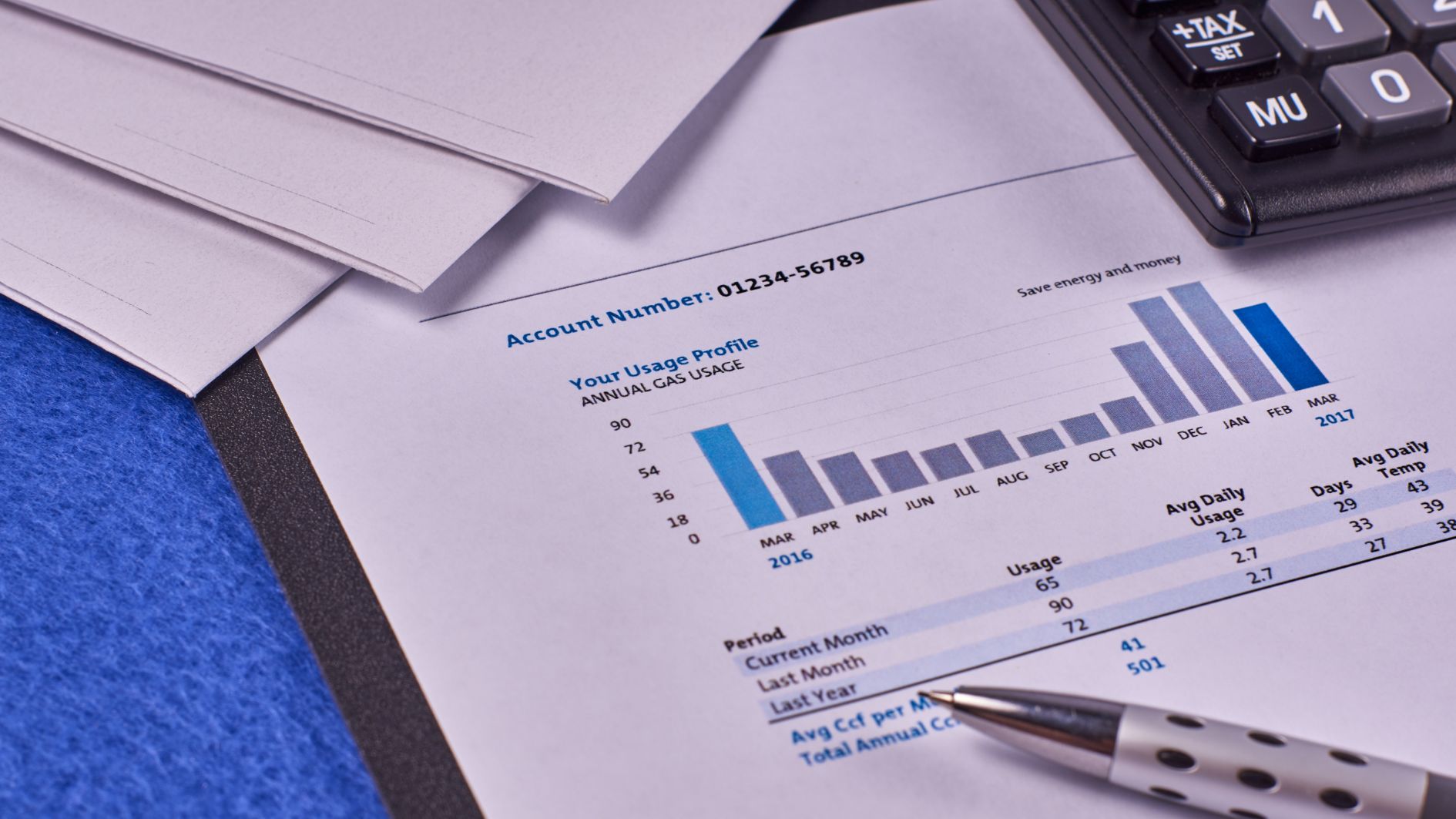Image source: Canva.com
Reading your electric bill might seem straightforward, but many Americans make mistakes when interpreting it. The complexity of your bill can vary depending on your location and utility provider, but several common components are crucial to understand. If you’re seeking clarity, here are the top five things to know about reading and understanding your electric bill correctly, illustrated with examples from my own bill.
1. Identify the Bill You’re Reading and Your Billing System
Depending on where you live, your electricity bill might be bundled with other municipal services like water and gas. It’s crucial to recognize what you’re looking at! Here’s how to differentiate:

Electricity: Measured in kilowatt-hours (kWh)
Water: Measured in gallons
Gas: Measured in British Thermal Units (BTUs)
These units of measurement are clear indicators of the type of utility being billed.
I live in New York and receive a monthly bill from my utility company, Con Edison. The bill is clearly labeled on the first page, making it easy to distinguish from other utility bills.
Example electric bill:
2. Understand Your Monthly Billing Plan
This step is crucial: are you on a budget billing plan, or are you charged for your actual monthly usage?
Budget Billing Plan
If you’re on a budget billing plan, your utility estimates your annual electricity usage based on the previous year and divides the total cost into equal monthly payments. This evens out your payments throughout the year, so you pay the same amount each month, regardless of seasonal variations in your electricity usage.

Advantages
Consistent Monthly Payments: You avoid high bills during peak usage months, like summer if you use air conditioning extensively.
Easier Budgeting: Knowing your monthly payment helps with financial planning.

Considerations
Seasonal Discrepancies: In the summer, your bill might be lower than those on a monthly usage plan, but higher in the winter if your consumption patterns vary.
Monthly Usage Billing
If you’re charged based on your actual monthly usage, your bill reflects the number of kilowatt-hours (kWh) you used during that billing cycle, multiplied by the prevailing rate.

Advantages
Reflects Actual Usage: You pay for what you use, which can incentivize energy-saving habits.
Transparency: Easier to track and understand changes in your electricity consumption.

Considerations
Fluctuating Bills: Your payments will vary month to month, potentially leading to higher costs during peak usage periods.
Example:
I’m charged for my monthly usage, so my electric bill fluctuates based on my consumption. For instance, I owed $592.29 for electricity in June 2023.
Monthly Billing Charges Breakdown:
- Previous Reading: 79682 kWh
- Current Reading: 81518 kWh
- Usage: 1,836 kWh
- Rate: $0.14/kWh
- Basic Service Charge: $18.28
- Delivery Charges: $261.35
- System Benefit Charge: $9.55
- GRT & other tax surcharges: $14.20
Total Bill: $592.29
3. Understand the Breakdown of Charges
Your energy bill consists of multiple charges, reflecting not only the electricity you consume but also the costs associated with maintaining the grid and paying utility workers. Here are the primary components of an electric bill:
Supply (Generation) Charge
This charge covers the cost of generating the electricity you use. It includes:
- Electricity supply cost: The amount you pay for the actual power consumed, usually calculated per kilowatt-hour (kWh).
Transmission and Distribution (Delivery) Charge
These charges cover the costs of delivering electricity to your home, including:
- Transmission charge: The cost of moving electricity from power plants to substations.
- Distribution charge: The cost of distributing electricity from substations to your home.
- Basic service charge: A fixed monthly fee for maintaining the connection to the grid.
Miscellaneous Charges
These charges include taxes, regulatory fees, renewable energy program fees, energy efficiency charges, and other mandatory or program-specific expenses.
- Taxes and fees: State and local taxes, regulatory fees, and other mandatory charges.
- Renewable energy charge: Fees associated with renewable energy programs.
- Energy efficiency charge: Costs related to energy-saving programs and initiatives.
In areas with a deregulated energy market, you might have the option to choose your electricity supplier, potentially finding more competitive rates for the supply portion of your bill.
4. Know Your Monthly Electricity Consumption
Understanding your monthly electricity consumption is crucial for managing your energy usage and costs. Most electric bills will provide a detailed breakdown of your usage, including daily averages and historical comparisons over the year. Here’s what you need to do:
Key Steps
Check the Usage Summary
Look at the section of your bill that shows your total kilowatt-hours (kWh) used during the billing period. This will usually be displayed prominently.
Daily vs. Monthly Rates
Ensure you’re interpreting your consumption correctly. Bills often show daily usage averages, but it’s the monthly total that determines your bill.
Track Changes Over Time
Many bills include graphs or charts that display your usage trends over several months or the past year. Use these to identify patterns or seasonal spikes in your electricity use.
By accurately measuring and assessing your monthly usage, you can make more informed decisions about how to reduce your consumption and lower your bills. Don’t confuse daily usage figures with monthly totals, as this can lead to miscalculations.
5. Understanding Tiered Billing Structures
While my bill is fairly straightforward for calculating costs based on electricity consumption, some utilities use a more complex tiered billing structure. In a tiered system, the price per kilowatt-hour (kWh) can vary depending on the amount of electricity you use. Here’s how it works:
Key Points
Tiered Pricing
Your utility might charge one rate for the first 500 kWh and a different, often higher, rate for any usage above that threshold. This incentivizes lower consumption by increasing the cost of higher usage.
Bill Breakdown
If your utility uses a tiered structure, your bill will show how many kWh you used in each tier. This breakdown helps you understand how your total usage is distributed across different pricing levels.
Example:
Tier 1 (0-500 kWh): $0.10 per kWh
Tier 2 (501+ kWh): $0.15 per kWh
Calculating Costs
Determine Usage in Each Tier
If you used 600 kWh in a month:
500 kWh would be charged at the Tier 1 rate.
100 kWh would be charged at the Tier 2 rate.
Calculate Total Cost
Tier 1 Cost: 500 kWh x $0.10 = $50.00
Tier 2 Cost: 100 kWh x $0.15 = $15.00
Total Cost: $50.00 + $15.00 = $65.00
To accurately understand how much you pay for electricity, you must break down your bill and compare your consumption to its cost. Here’s how you can do it effectively:

Measure Your Consumption
Review your bill to find the total kilowatt-hours (kWh) used during the billing period. Most utilities report this monthly unless you’re on a budget billing plan.

Compare Costs
Examine the rates applied to your consumption. These typically include:
- Supply charge: The cost of the electricity you use.
- Delivery charge: The cost of transporting electricity to your home.
Example Breakdown
- Monthly usage: If your bill indicates you used 200 kWh during the billing period, this will be listed.
- Rates applied:
- Supply charge: $0.10 per kWh
- Delivery charge: $0.05 per kWh
- Calculate costs:
- Supply cost: 200 kWh x $0.10 = $20.00
- Delivery cost: 200 kWh x $0.05 = $10.00
- Total cost: $20.00 + $10.00 = $30.00
By breaking down your bill in this way, you gain a clear understanding of how your energy consumption translates into costs. This insight can help you manage and potentially reduce your electricity expenses.





